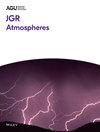K-changes are observed as step-like increases in the thundercloud electric fields. The K-changes occur in the late part of intra-cloud lightning or during negative cloud-to-ground lightning between return strokes. It has been shown that the processes leading to K-changes initiate in the decayed part of a positive leader channel and propagate toward the flash origin. They are often accompanied by microsecond-scale electric field pulses. We introduce a new model to simulate processes leading to the K-changes in cloud-to-ground lightning. Our method is based on the full solution of Maxwell's equations coupled to Poisson's equation for the thundercloud charge structure. To model the K-changes, we gradually increase the decayed channel conductivity. The modeled current wavefront propagates due to the K-processes downward along a vertical channel and completely attenuates before reaching the ground. We derive the evolution of the linear charge densities and the scalar electric potential along the channel leading to K-changes. We model electrostatic step-like changes in the measured electric field together with the approximate rates and amplitudes of the microsecond scale pulses. Step-like changes increase their amplitudes with the length of the simulated channel and with a higher conductivity of the channel. The microsecond-scale pulse waveshapes depend mainly on the propagation velocity of the current wave, and the time scale of the conductivity increase. We show that our modeled waveforms are in a good agreement with observations conducted in Florida.


